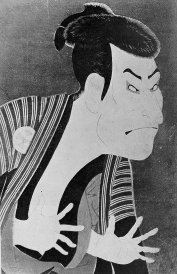
Ukiyo-e
This type of painting deals with the "floating world", meaning the world dealing with the pleasures of ordinary people. In the 17th century it was centered on painting as such, but later it developed into the art of the woodcut.
It's also another example of the growing merchant class. In order to do a ukiyo-e woodblock there was a need for four different persons. One was the person who designed the print, making a drawing and a rough indication of the colors to be used. The second person was the woodcutter who did the actual engraving. The third person was the printer and the fourth person was the actual publisher who financed the woodcuts.
Also, since the woodcuts were not terribly expensive at the time, this allowed for their spread among the "common" people.
The person who founded the ukiyo-e school was Hishikawa Moronobu (1618-1694). He was the individual most responsible from changing the ukiyo-e style from painting to woodcutting. He used subjects from the Kabuki theater and people from the entertainment district in Edo.
One of the great painting artists was Toshusai Sharaku who might have been a Noh actor. He made about a hundred and forty portraits of actors and managed to do that in a period of ten months.

This is an example of one of his works, a Kabuki actor.
Main Index
Japan main page
Japanese-American Internment Camps index page
Japan and World War II index page
|